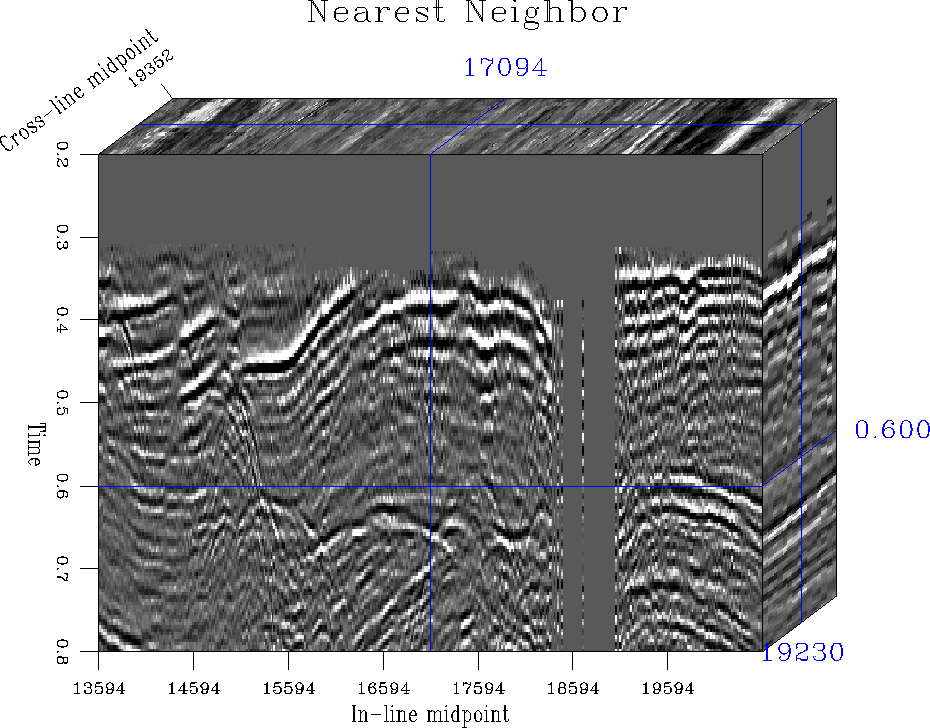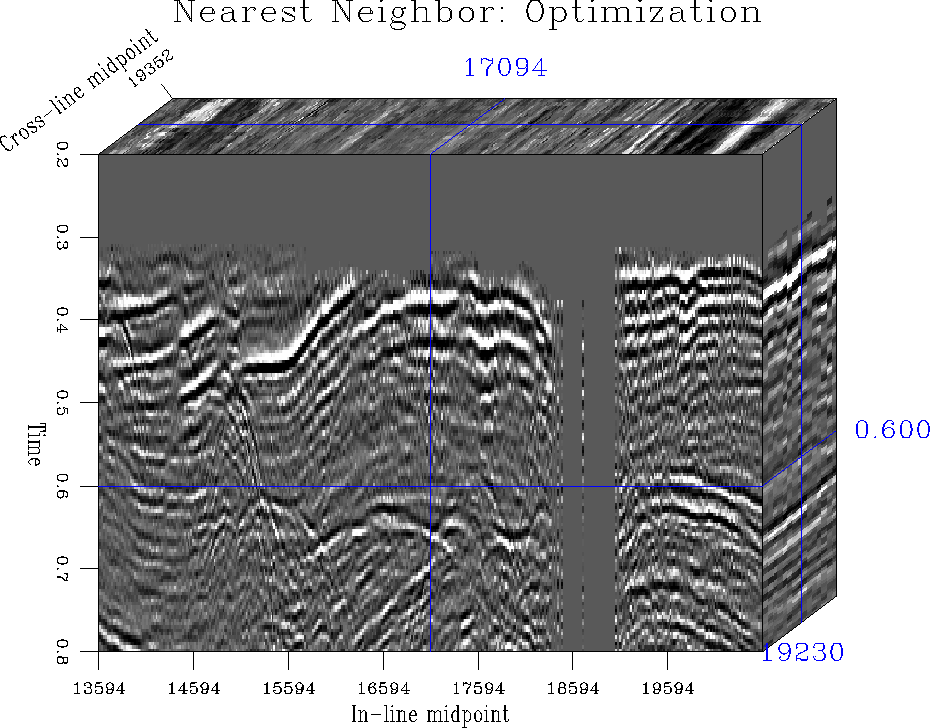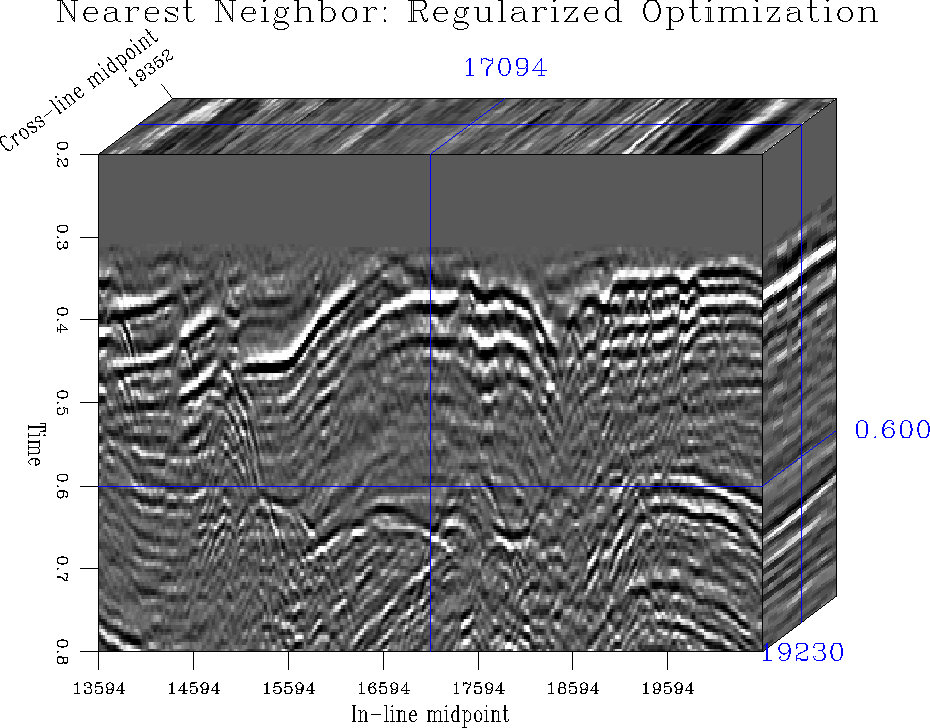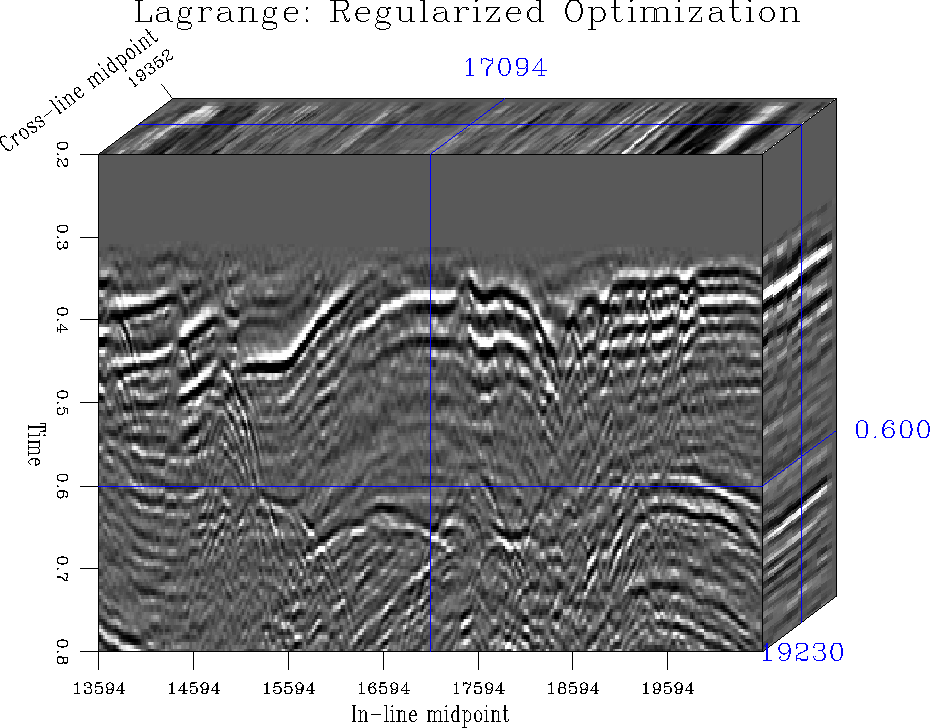




Next: Discussion
Up: Fomel: Regularization
Previous: Deburst
In his notes 3-D seismic imaging ![[*]](http://sepwww.stanford.edu/latex2html/foot_motif.gif) ,
Biondo Biondi discusses partial stacking as the simplest prototype
example of an imaging operator. A simple implementation of partial
stacking can employ normal moveout (NMO) to correct for traveltime
differences in the data. Stacking irregular data after residual NMO
can be regarded then as an inverse interpolation problem, which one
can solve by optimization methods. In this section, I include a simple
example of an efficient data-space regularization for optimizing
partial stack.
,
Biondo Biondi discusses partial stacking as the simplest prototype
example of an imaging operator. A simple implementation of partial
stacking can employ normal moveout (NMO) to correct for traveltime
differences in the data. Stacking irregular data after residual NMO
can be regarded then as an inverse interpolation problem, which one
can solve by optimization methods. In this section, I include a simple
example of an efficient data-space regularization for optimizing
partial stack.
Following Biondi's reproducible example, I use a potion of the Conoco
North Sea dataset with offsets, windowed in the range from 400 to 600
m. The geometry of the CMP locations of the input traces is
illustrated in Figure 10. The fold distribution, shown as a
map view in Figure 11 and as a histogram in Figure
12 is fairly dense overall, but has noticeable holes
(empty bins). The regions of zero fold make the inverse interpolation
problem underconstrained and suggest an application of a regularized
optimization scheme.
cmp
Figure 10 Midpoint geometry of the input data
|
| 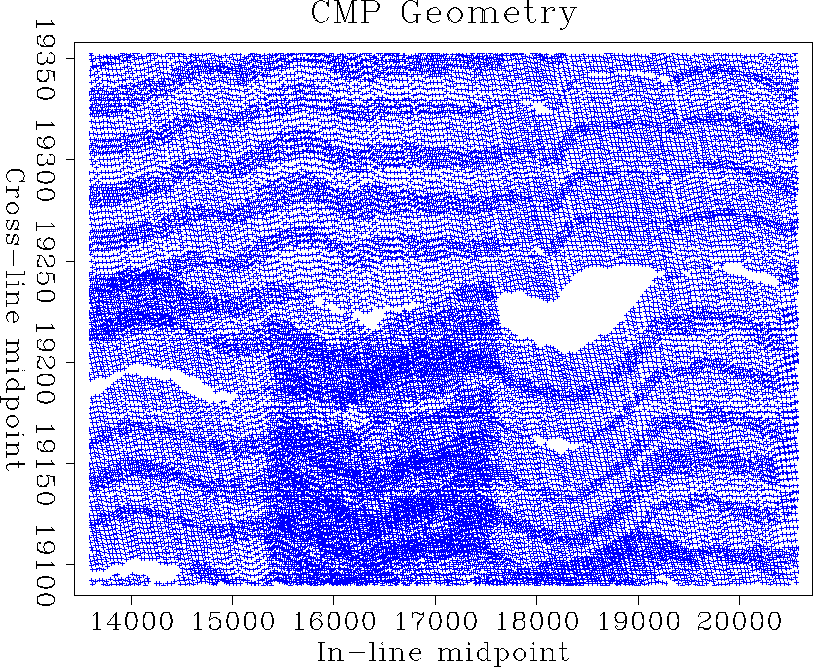 |





fold
Figure 11 Fold distribution of the input data. A map view.
|
| 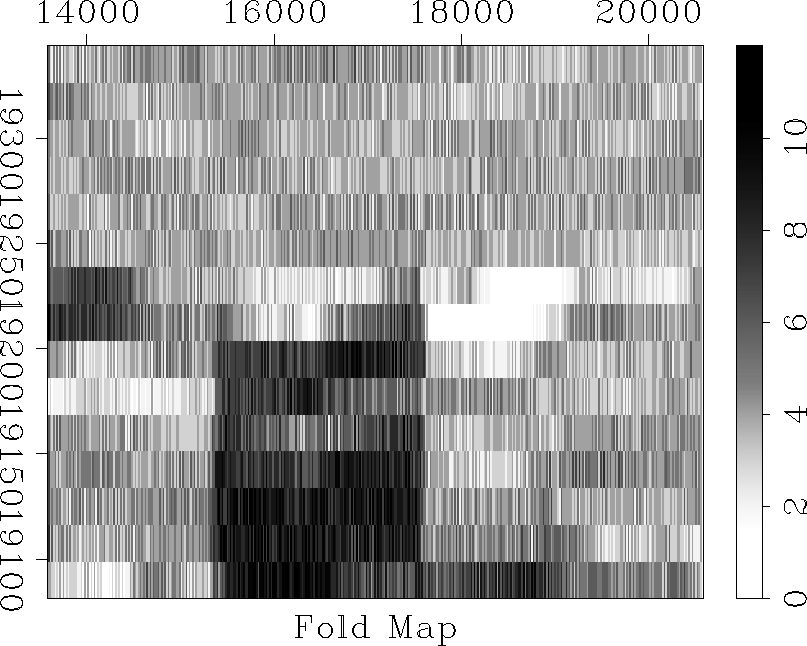 |





hist
Figure 12 Fold distribution of the input data. A histogram.
|
| 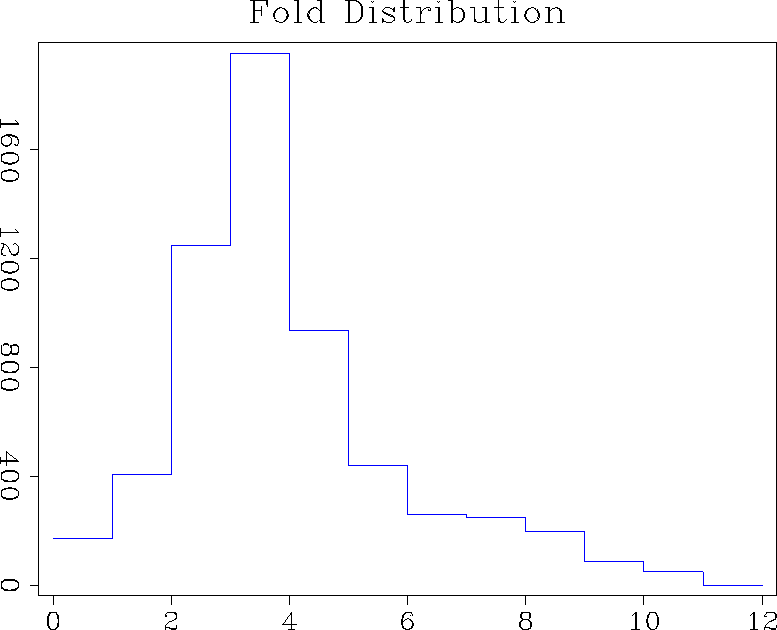 |





Figure 13 shows the result of simple binning (the adjoint
of nearest neighbor interpolation), normalized by the inverse of the
fold density. Obviously, the regions of zero fold don't receive any
signal, which can lead to undesirable artifacts in future processing.
Figure 14 is the result of non-regularized optimization,
with 5 conjugate-gradient iterations at each time slice level. This
approach not only fails to fill the empty holes, but also creates
unbalanced output because of the poor conditioning of the inverse
problem. Figure 15 shows the result of a data-space
regularized inversion with a small smoothing filter as a
preconditioner. The convergence is fast, and the result looks much
improved. Because of the fast convergence of the data-space
regularization, the inverse interpolation scheme is inexpensive to
apply. One easy way of improving the result further is to change the
simple nearest neighbor interpolation operator to a more accurate one.
Figure 16 is the result of the regularized inverse
interpolation with the Lagrange 4-point interpolator.
bin
Figure 13 Data transformed to a regular grid
by normalized adjoint interpolation (simple binning.)




 invbin
invbin
Figure 14 Data transformed to a regular grid by
non-regularized inverse interpolation.




 regbin
regbin
Figure 15 Data transformed to a regular grid
by data-space regularized inverse interpolation.





regtin
Figure 16 Data transformed to a regular grid
by data-space regularized inverse interpolation, using Lagrange's
4-point interpolator as the forward interpolation operator.





As demonstrated by Biondi et al. (1996), an accurate
interpolation for dipping reflector events and diffractions requires
the azimuth moveout operator. Another interesting, though untested,
approach is to use the inverse of a prediction-error filter for
preconditioning the inverse interpolation.





Next: Discussion
Up: Fomel: Regularization
Previous: Deburst
Stanford Exploration Project
9/11/2000
![[*]](http://sepwww.stanford.edu/latex2html/foot_motif.gif) ,
Biondo Biondi discusses partial stacking as the simplest prototype
example of an imaging operator. A simple implementation of partial
stacking can employ normal moveout (NMO) to correct for traveltime
differences in the data. Stacking irregular data after residual NMO
can be regarded then as an inverse interpolation problem, which one
can solve by optimization methods. In this section, I include a simple
example of an efficient data-space regularization for optimizing
partial stack.
,
Biondo Biondi discusses partial stacking as the simplest prototype
example of an imaging operator. A simple implementation of partial
stacking can employ normal moveout (NMO) to correct for traveltime
differences in the data. Stacking irregular data after residual NMO
can be regarded then as an inverse interpolation problem, which one
can solve by optimization methods. In this section, I include a simple
example of an efficient data-space regularization for optimizing
partial stack.



